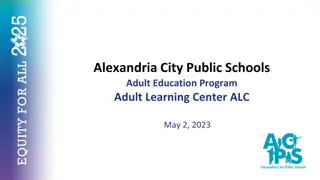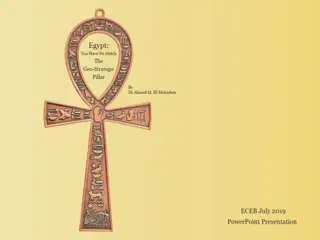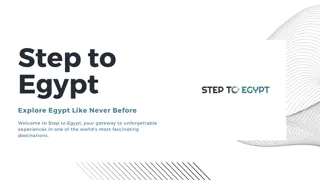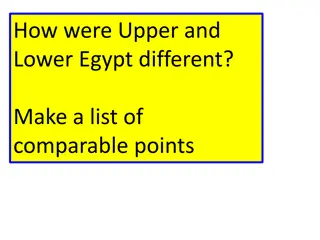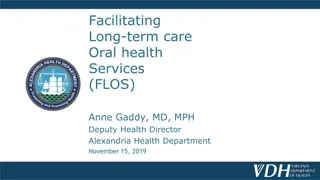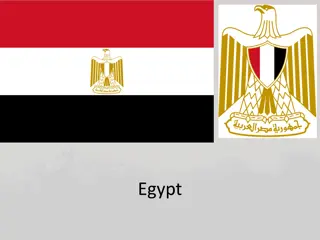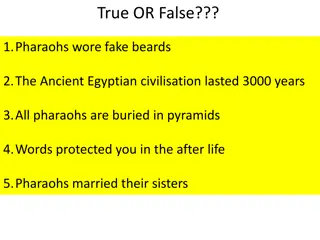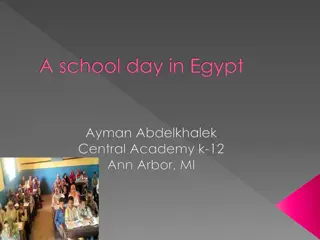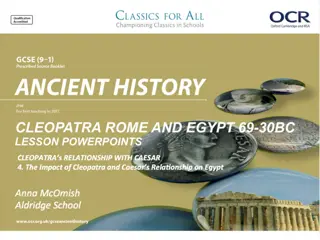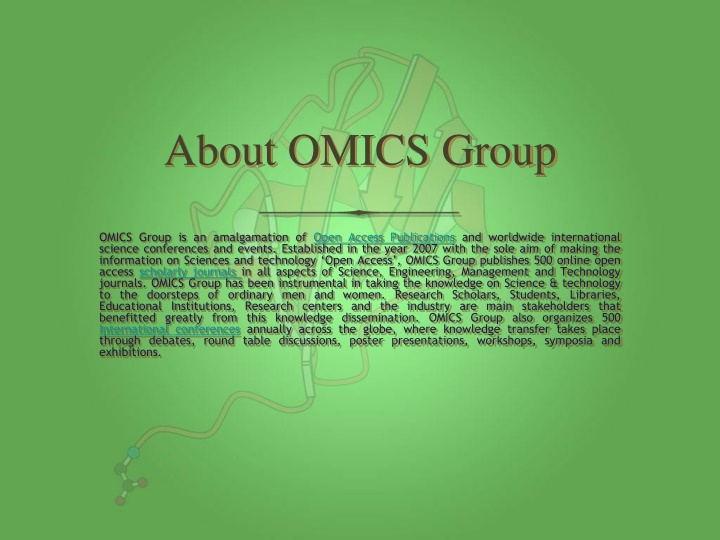
OMICS Group: Open Access Journals and International Conferences
OMICS Group, established in 2007, publishes 500 online open access scholarly journals covering Science, Engineering, Management, and Technology. They also organize 500 international conferences annually, facilitating knowledge dissemination in various fields. Research scholars, students, and industry professionals benefit from their initiatives. Explore the world of science with OMICS Group!
Download Presentation

Please find below an Image/Link to download the presentation.
The content on the website is provided AS IS for your information and personal use only. It may not be sold, licensed, or shared on other websites without obtaining consent from the author. If you encounter any issues during the download, it is possible that the publisher has removed the file from their server.
You are allowed to download the files provided on this website for personal or commercial use, subject to the condition that they are used lawfully. All files are the property of their respective owners.
The content on the website is provided AS IS for your information and personal use only. It may not be sold, licensed, or shared on other websites without obtaining consent from the author.
E N D
Presentation Transcript
About OMICS Group OMICS Group is an amalgamation of Open Access Publications and worldwide international science conferences and events. Established in the year 2007 with the sole aim of making the information on Sciences and technology Open Access , OMICS Group publishes 500 online open access scholarly journals in all aspects of Science, Engineering, Management and Technology journals. OMICS Group has been instrumental in taking the knowledge on Science & technology to the doorsteps of ordinary men and women. Research Scholars, Students, Libraries, Educational Institutions, Research centers and the industry are main stakeholders that benefitted greatly from this knowledge dissemination. OMICS Group also organizes 500 International conferences annually across the globe, where knowledge transfer takes place through debates, round table discussions, poster presentations, workshops, symposia and exhibitions.
OMICS International Conferences OMICS International is a pioneer and leading science event organizer, which publishes around 500 open access journals and conducts over 500 Medical, Clinical, Engineering, Life Sciences, Pharma scientific conferences all over the globe annually with the support of more than 1000 scientific associations and 30,000 editorial board members and 3.5 million followers to its credit. OMICS Group has organized 500 conferences, workshops and national symposiums across the major cities including San Francisco, Las Vegas, San Antonio, Omaha, Orlando, Raleigh, Santa Clara, Chicago, Philadelphia, Baltimore, United Kingdom, Valencia, Dubai, Beijing, Hyderabad, Bengaluru and Mumbai.
CELLULAR AND MOLECULAR ACTIONS OF GROWTH FACTORS Mahmoud Balbaa Department of Biochemistry, Faculty of Science, Alexandria University, Alexandria, Egypt
Growth Factors & Cell Cycle Gene Transcription Receptors + S Priming G1 G0 Cell Cycle G2 M
Growth factors and their receptors are important signaling molecules, which are involved in the regulation of cell growth. Epidermal growth factor (EGF) pathway plays an important role in tumorigenesis, including Hepatocellular Carcinoma. EGF polymorphisms are associated with susceptibility to several types of cancers. Epidermal growth factor receptor (EGFR) is considered as an important signaling hub where different proliferative and survival signals converge. 5
Overexpression/activation of EGFR is associated with metastasis, poor prognosis and resistance to chemotherapy. EGFR is overexpressed or activated by autocrine or paracrine growth factor loops in at least 50% of epithelial malignancies. 6
Human Epidermal Growth Factor Receptor Family No specific ligands - often acts as dimer partner NRG2 NRG3 Heregulin s -cellulin EGF, TGF Cellulin Amphiregulin, HB- EGF Heregulins TK TK TK erbB1 HER1 EGFR erbB2 HER2 neu erbB3 HER3 erbB4 HER4
EGFR Structure Extracellular Domain Transmembrane Domain Intracellular Domain TK
Receptor Dimerization and Kinase Activation From Hunter (2001) Nature 411,355.
EGFR Stimulation & dimerisation TK TK TK TK EGFR Homo Dimerisation erbB1 HER1 EGFR erbB2 HER2 neu erbB3 HER3 erbB4 HER4
EGFR Function in Normal Cell ATP ATP TK TK + Gene Transcription Cell Cycle Progression Antiapoptosi Cell s Proliferation Angiogenesis
EGFR signal transduction in tumour cells TK TK PI3-K GRB2 pY pY SOS pY RAS RAF STAT3 PTEN AKT MEK Gene transcription G1 M MAPK S Proliferation/ maturation Survival (anti-apoptosis) G2 Chemotherapy / radiotherapy resistance Metastasis Angiogenesis
Strategies to inhibit EGFR signaling Immune effector Anti-ligand mAbs EGFR tyrosine kinase inhibitors Bispecific Abs cell Anti-EGFR mAbs TK TK TK TK ATP - - - -
Transforming Growth Factor (TGF ) Signals A large class of molecular signals involved in regulating development (bone growth, mesoderm formation, formation of cell-adhesion molecules and anti-proliferation effects). The activated TGF receptor directly phosphorylates a transcription factor.
Human TGF Signal Molecules Three tissue-specific isoforms: TGF 1 TGF 2 TGF - 3 Dimeric homo- or hetero- forms.
TGF-1 cytokine regulation differentiation of both normal and transformed cells. It has been reported that TGF -1 mRNA and its protein were overexpressed in hepatocellular carcinoma tissues. is multifunctional involved of growth a in the and
There is an evidence that TGF modulates the high- affinity receptors for EGF and TGF . EGFR and TGF are targets for TGF in some cells.
Protein Tyrosine Kinases (TKs) Receptor tyrosine kinases (RTK) insulin receptor EGF receptor PDGF receptor TrkA Non-receptor tyrosine kinases (NRTK) c-Src Janus kinases (Jak) Csk (C-terminal src kinase) Focal adhesion kinase (FAK)
Evaluation of EGF, p-EGFR and TGF -1 Levels of EGF, p-EGFR and TGF -1 in chronic hepatitis hepatocellular carcinoma (HCC) patients in early and late stage of histopathological stages of HCC patients. EGF was determined by quantitative sandwich enzyme immunoassay technique. p-EGFR was determined by using PTK kit assay system (ELISA technique). TGF- 1 was estimated using DRG technique. C (CHC) and TGF- 1 ELISA
There are significant higher serum levels of EGF and TGF -1 in patients with HCC compared to their level in patients with CHC infection and control subjects. The levels of p-EGFR in HCC and CHC patients show a highly significant difference between patients.
EGF and p-EGFR EGF p-EGFR
Levels of TGF-1 TGF -1
Level of serum alfa-fetoprotein (AFP), aspartate aminotransferase (AST), alanine aminotransferase (ALT) and albumin of patients having HCC and CHC compared to control subjects. Control (n = 20) CHC (n = 20) HCC (n = 30) Variable AFP (ng/ ml) ALB (g/dl) AST (U/L) ALT (U/L) 1.6 0.26 23.5 2.3*445 50.8* 4.6 0.07 3.3 0.06* 2.6 0.05* 19.4 0.4 76.4 3.4* 58.5 1.3* 15.6 0.59 62.2 4.97*38.1 1.65* 24
Conclusion EGF and its recptor phosphorylated form could be used as sensitive biomarkers for the diagnosis and prognosis of HCV-induced HCC. In conclusion, various growth factors are involved in different biological processes, some of which have a clinical importance in disease. 25
References Balbaa, M., Bassiouny, K. and El-Ashry, E. S. (2008). Current Trends Chemistry, 5: 33-44. Shehata, F., Abdel Monem, N., Sakr, M., Kasem, S. and Balbaa, M. (2013). Medical Oncology. DOI: 10.1007/s12032-013-0673-x. Balbaa, M. (2013). Physiology: Open http://dx.doi.org/10.4172/2168 9652.1000e118. in Medicinal Biochemistry Access, & 4, - 2:
Let us meet again.. We welcome you all to our future conferences of OMICS International 4thAnnual Conference on European Pharma Congress June 18-20,2016, Berlin, Germany. http://europe.pharmaceuticalconferences.com/

![[PDF⚡READ❤ONLINE] Tutankhamun's Trumpet: Ancient Egypt in 100 Objects from the](/thumb/20549/pdf-read-online-tutankhamun-s-trumpet-ancient-egypt-in-100-objects-from-the.jpg)


